Abstract
Audits of antibiotic prescribing were done for periods of up to eight weeks in two successive years on medical, surgical, orthopaedic, gynaecology, obstetric, and urology wards and in an accident and emergency department. Clinical details were matched with antibiotic prescribing, and the appropriateness of the latter was judged independently by two medical microbiologists. Only when they agreed was an individual prescription included in the analysis. Overall, 28% of prescriptions in 1979 and 35% in 1980 were judged as unnecessary, with 17% and 16%, respectively, being for inappropriate choices of antibiotic. An educational programme about antibiotic prescribing carried out between the audits had no beneficial effect overall. Though the results compared favourably with those of audits published, prescribing could still be much improved. To judge by the failure of education, however, this might be difficult to achieve. Most prescriptions were written by junior staff, who in the absence of guidance from their seniors and because of their frequent moves would require a widespread and continual education programme. Published concern about the quality of antibiotic prescribing appears to be justified.
Full text
PDF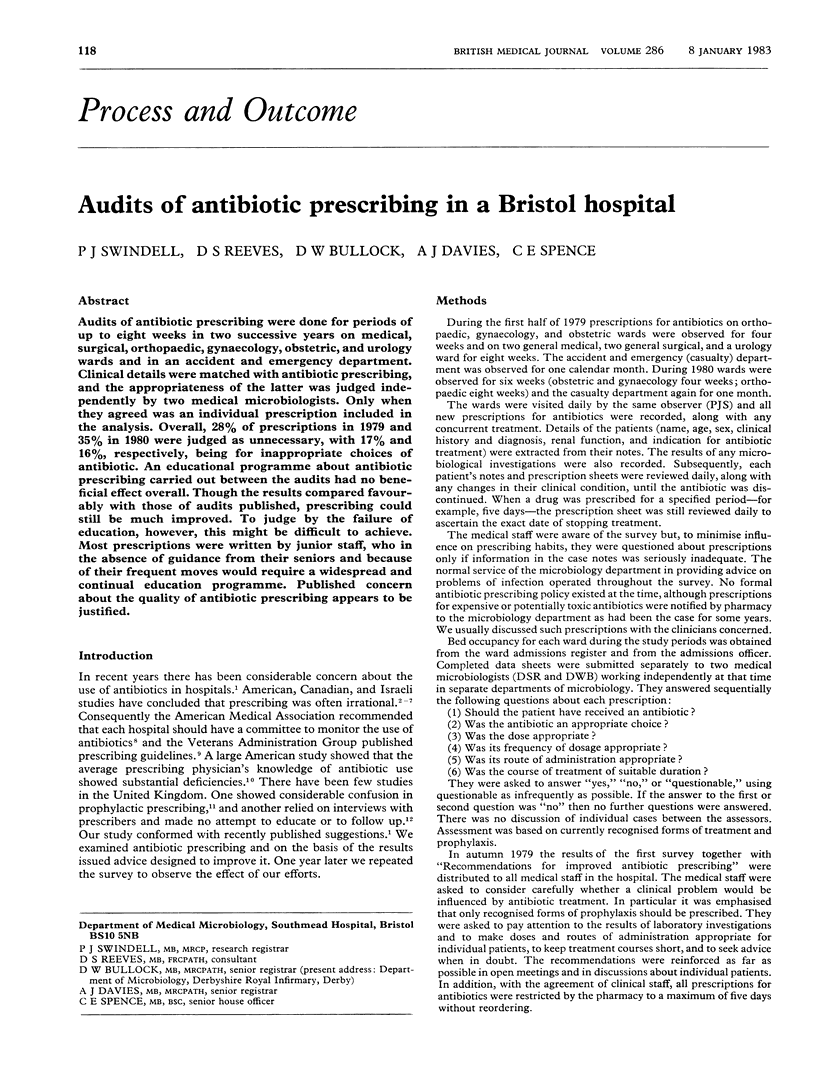
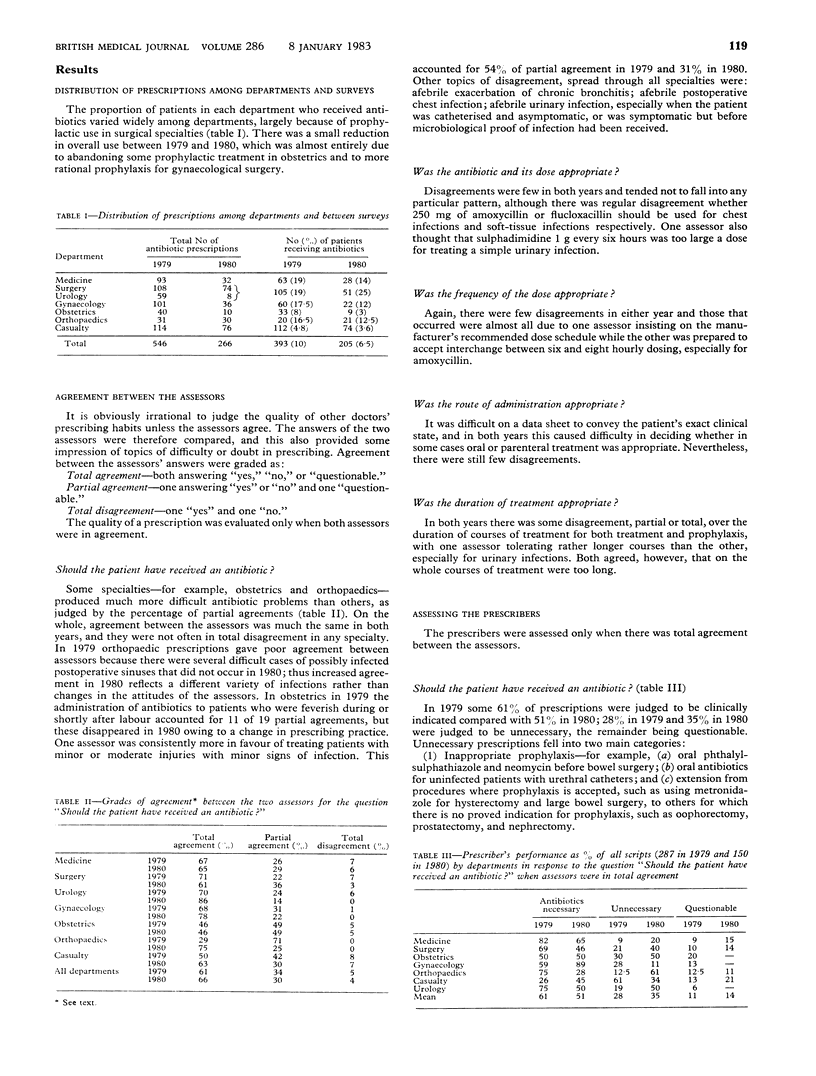
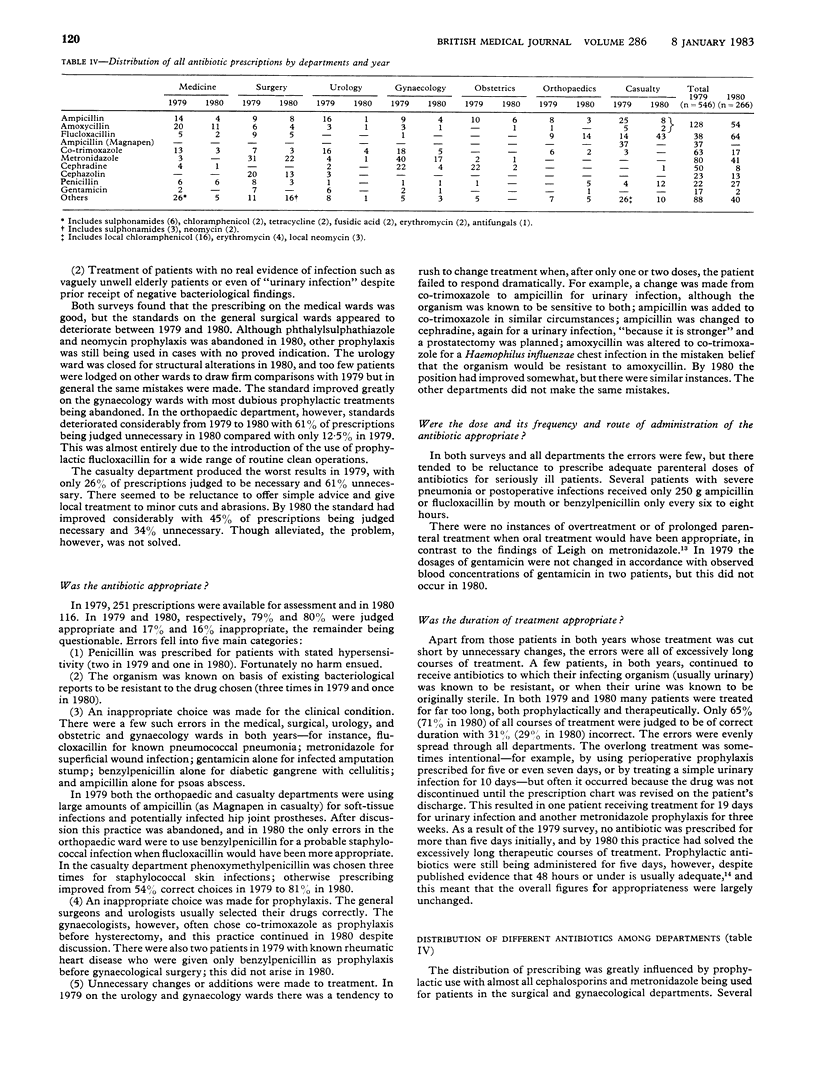
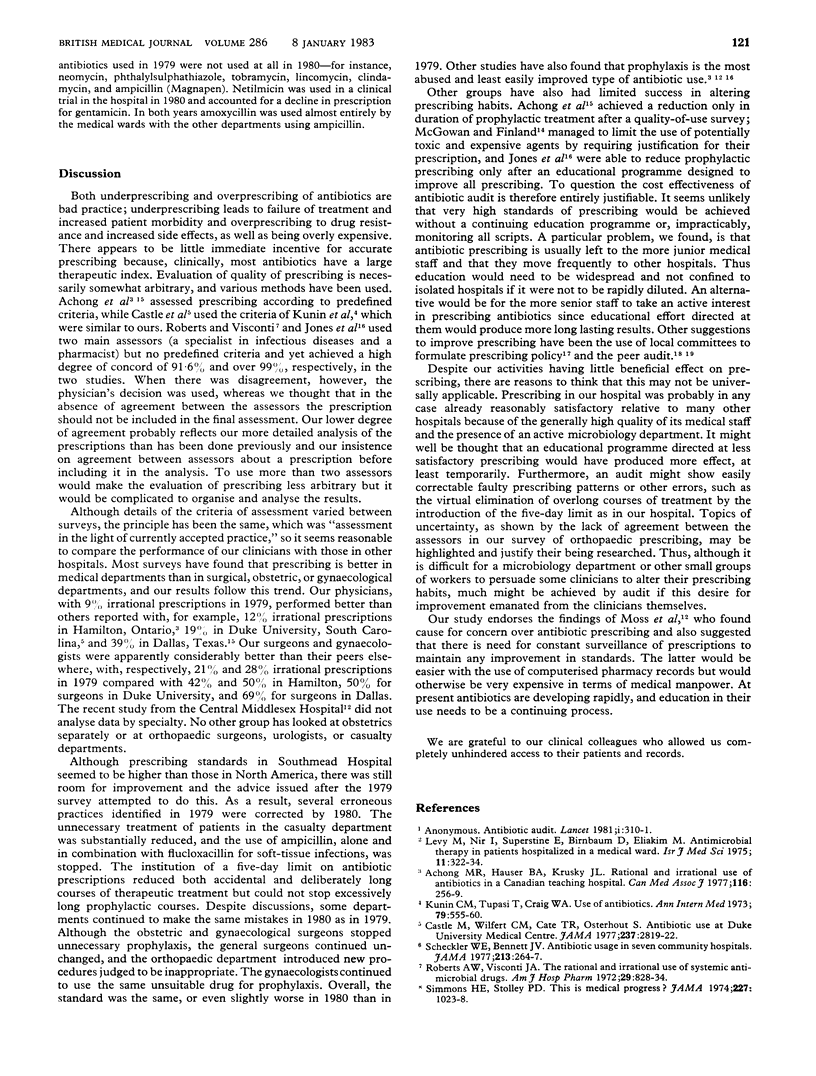
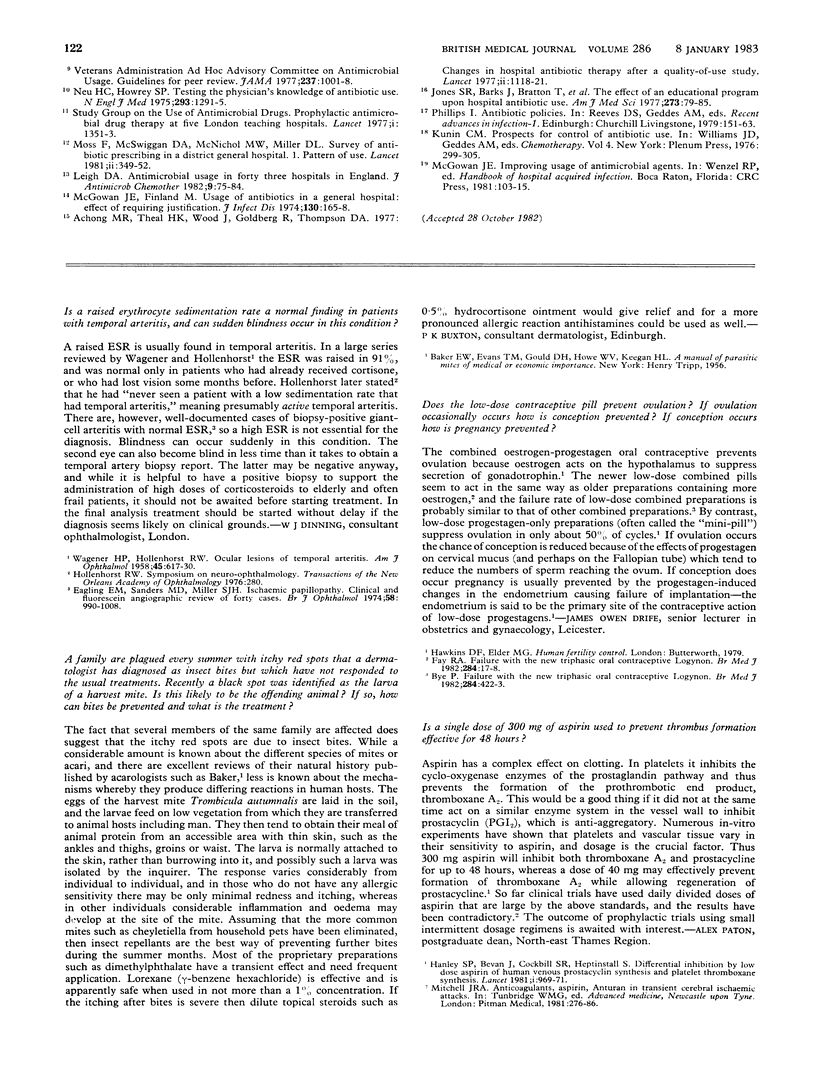
Selected References
These references are in PubMed. This may not be the complete list of references from this article.
- Achong M. R., Hauser B. A., Krusky J. L. Rational and irrational use of antibiotics in a Canadian teaching hospital. Can Med Assoc J. 1977 Feb 5;116(3):256–259. [PMC free article] [PubMed] [Google Scholar]
- Castle M., Wilfert C. M., Cate T. R., Osterhout S. Antibiotic use at Duke University Medical Center. JAMA. 1977 Jun 27;237(26):2819–2822. [PubMed] [Google Scholar]
- Eagling E. M., Sanders M. D., Miller S. J. Ischaemic papillopathy. Clinical and fluorescein aniographic review of forty cases. Br J Ophthalmol. 1974 Dec;58(12):990–1008. doi: 10.1136/bjo.58.12.990. [DOI] [PMC free article] [PubMed] [Google Scholar]
- Fay R. A. Failure with the new triphasic oral contraceptive Logynon. Br Med J (Clin Res Ed) 1982 Jan 2;284(6308):17–18. doi: 10.1136/bmj.284.6308.17-a. [DOI] [PMC free article] [PubMed] [Google Scholar]
- Hanley S. P., Bevan J., Cockbill S. R., Heptinstall S. Differential inhibition by low-dose aspirin of human venous prostacyclin synthesis and platelet thromboxane synthesis. Lancet. 1981 May 2;1(8227):969–971. doi: 10.1016/s0140-6736(81)91733-5. [DOI] [PubMed] [Google Scholar]
- Jones S. R., Pannell J., Barks J., Yanchick Y. A., Bratton T., Browne R., McRee E., Smith J. W. The effect of an educational program upon hospital antibiotic use. Am J Med Sci. 1977 Jan-Feb;273(1):79–85. doi: 10.1097/00000441-197701000-00008. [DOI] [PubMed] [Google Scholar]
- Kunin C. M., Tupasi T., Craig W. A. Use of antibiotics. A brief exposition of the problem and some tentative solutions. Ann Intern Med. 1973 Oct;79(4):555–560. doi: 10.7326/0003-4819-79-4-555. [DOI] [PubMed] [Google Scholar]
- Leigh D. A. Antimicrobial usage in forty-three hospitals in England. J Antimicrob Chemother. 1982 Jan;9(1):75–84. doi: 10.1093/jac/9.1.75. [DOI] [PubMed] [Google Scholar]
- Levy M., Nir I., Superstine E., Birnbaum D., Eliakim M. Antimicrobial therapy in patients hospitalized in a medical ward. A report from the Boston Collaborative Drug Surveillance Program. Isr J Med Sci. 1975 Apr;11(4):322–334. [PubMed] [Google Scholar]
- McGowan J. E., Jr, Finland M. Usage of antibiotics in a general hospital: effect of requiring justification. J Infect Dis. 1974 Aug;130(2):165–168. doi: 10.1093/infdis/130.2.165. [DOI] [PubMed] [Google Scholar]
- Moss F., McNicol M. W., McSwiggan D. A., Miller D. L. Survey of antibiotic prescribing in a district general hospital. I. Pattern of use. Lancet. 1981 Aug 15;2(8242):349–352. doi: 10.1016/s0140-6736(81)90657-7. [DOI] [PubMed] [Google Scholar]
- Neu H. C., Howrey S. P. Testing the physician's knowledge of antibiotic use: Self-assessment and learning via videotape. N Engl J Med. 1975 Dec 18;293(25):1291–1295. doi: 10.1056/NEJM197512182932505. [DOI] [PubMed] [Google Scholar]
- Roberts A. W., Visconti J. A. The rational and irrational use of systemic antimicrobial drugs. Am J Hosp Pharm. 1972 Oct;29(10):828–834. [PubMed] [Google Scholar]
- Scheckler W. E., Bennett J. V. Antibiotic usage in seven community hospitals. JAMA. 1970 Jul 13;213(2):264–267. [PubMed] [Google Scholar]
- Simmons H. E., Stolley P. D. This is medical progress? Trends and consequences of antibiotic use in the United States. JAMA. 1974 Mar 4;227(9):1023–1028. doi: 10.1001/jama.227.9.1023. [DOI] [PubMed] [Google Scholar]
- WAGENER H. P., HOLLENHORST R. W. The ocular lesions of temporal arteritis. Am J Ophthalmol. 1958 May;45(5):617–630. [PubMed] [Google Scholar]
- Wallace R. B., Hoover J., Sandler D., Rifking B. M., Tyroler H. A. Altered plasma-lipids associated with oral contraceptive or oestrogen consumption. The Lipid Research Clinic Program. Lancet. 1977 Jul 2;2(8027):11–14. doi: 10.1016/s0140-6736(77)90005-8. [DOI] [PubMed] [Google Scholar]


